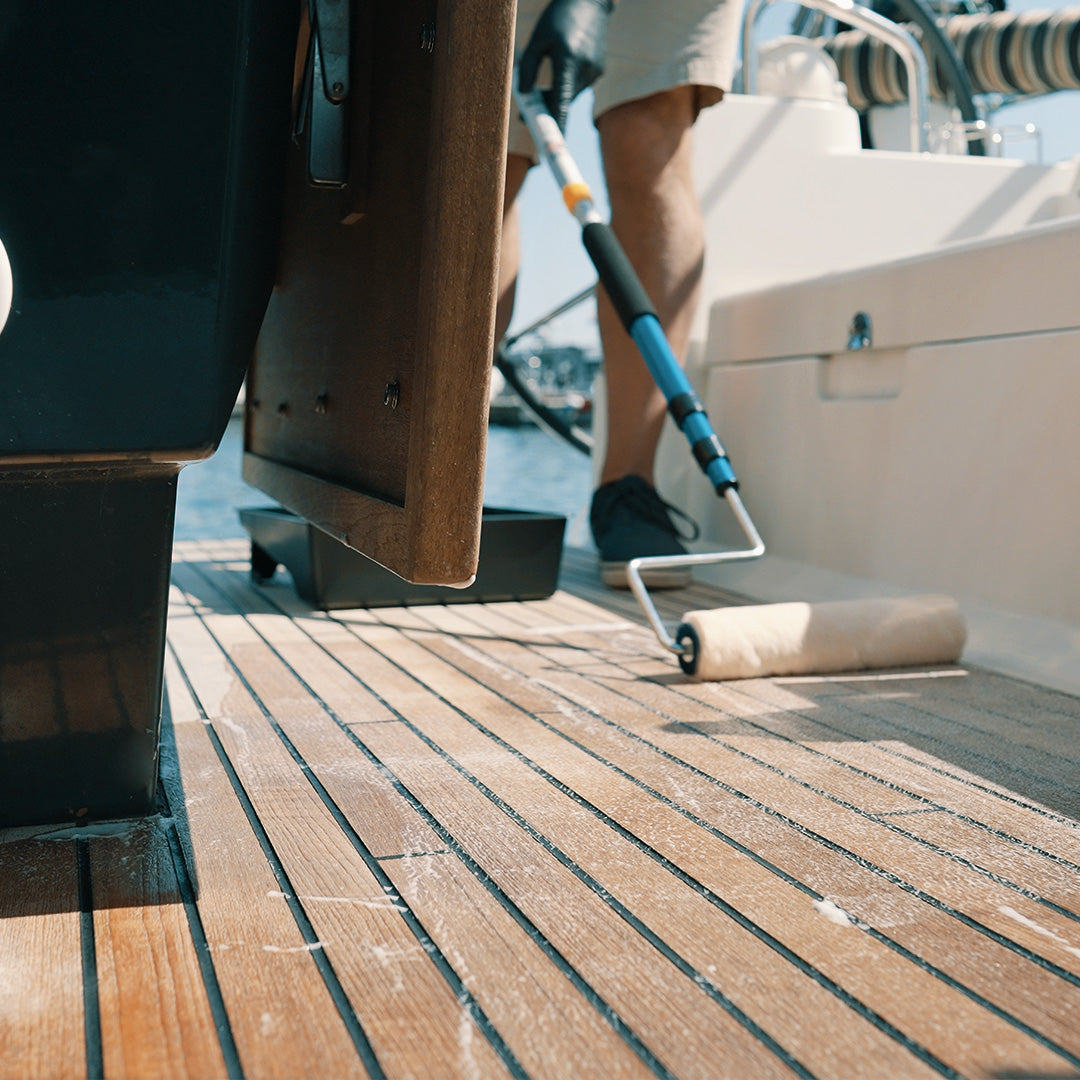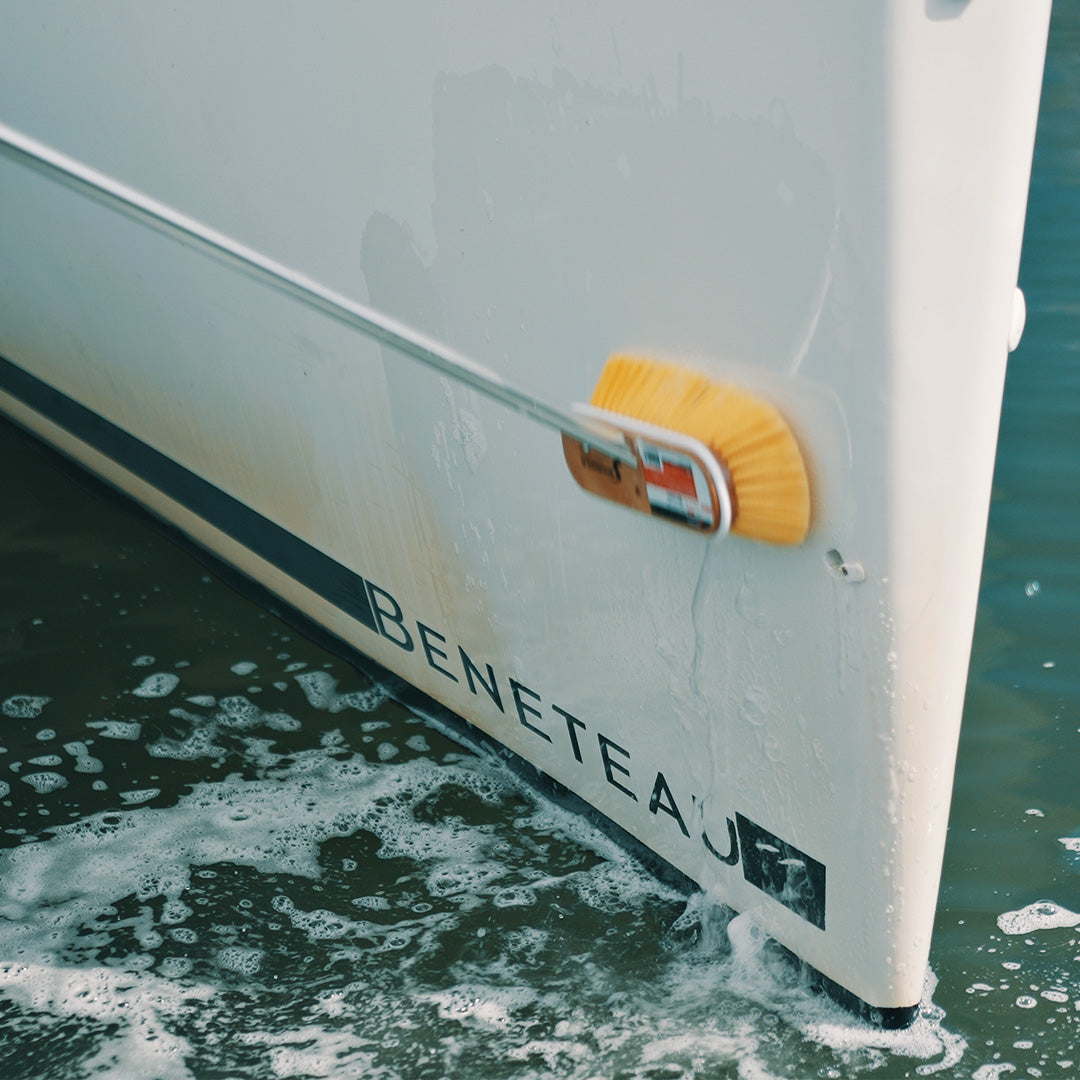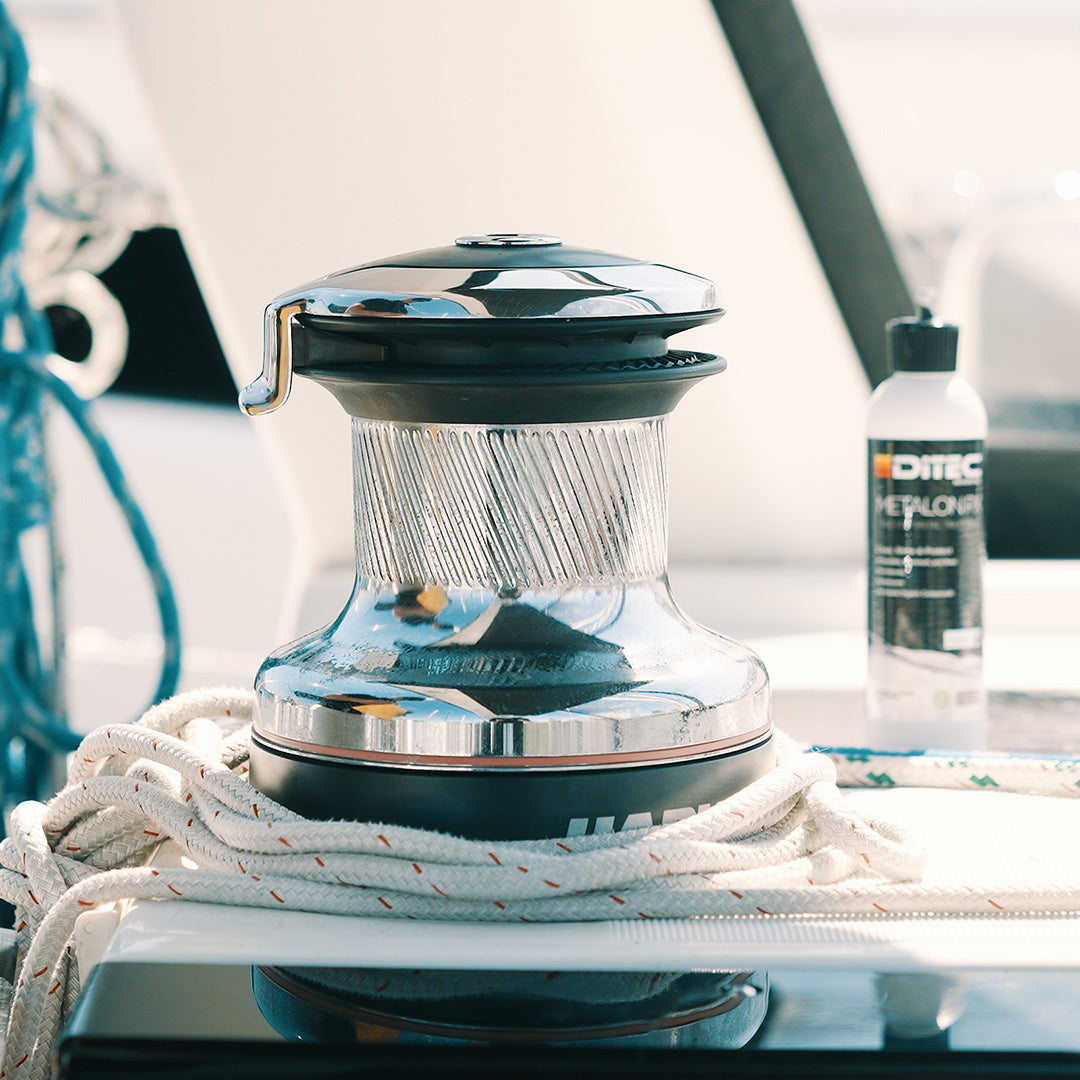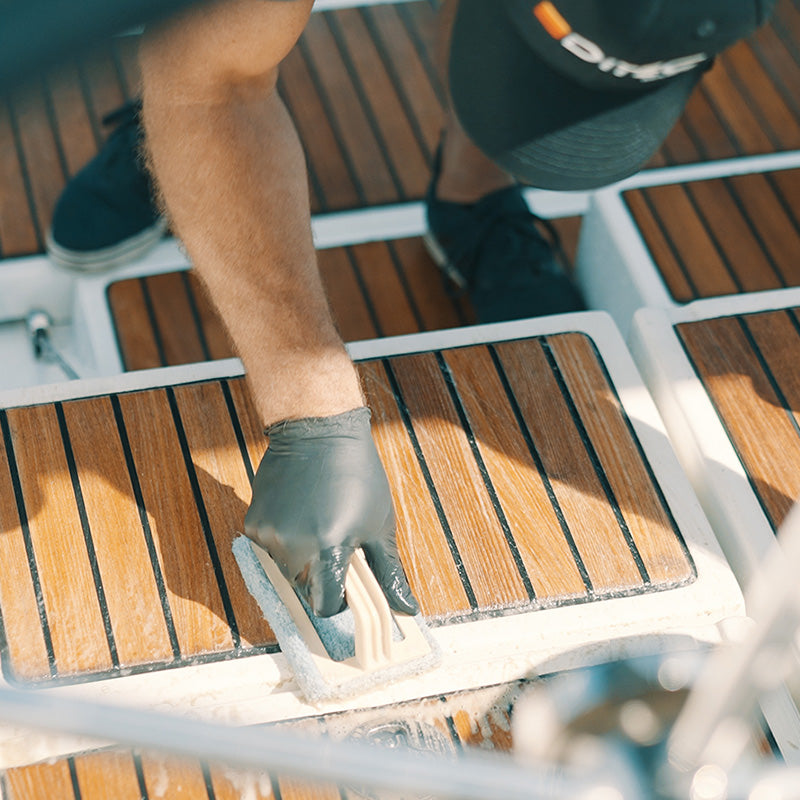As the boating season winds down and cooler temperatures begin to set in, it’s crucial to prepare your boat for the winter months ahead. Proper winterization ensures your vessel remains in peak condition, avoiding costly repairs when spring rolls around. Here’s a step-by-step guide to winterizing your boat:
Step 1: Clean Your Boat Thoroughly
Before you start the winterization process, give your boat a thorough cleaning. Removing dirt, grime, and saltwater residue prevents corrosion and mold growth during storage. This is also a great way to take note of any rust spots or areas where there may be small leaks.
- Use DiTEC’s Hull & Bottom Cleaner: Our eco-friendly Hull & Bottom Cleaner is designed to cut through tough stains, descale, and remove rust, barnacles, and marine growth– all without harming the environment. Use our Black Streak & Non-Skid Cleaner for stubborn stains on non-skid surfaces. Using a PH-neutral quality soap like DiTEC’s Elite Boat Wash will keep you from stripping any coating or waxes on your boat's surfaces.
- For Teak Decks: Use DiTEC’s Teak Magic or Teak Clean to get your teak looking brand new for next season. Protect your teak with Triton to give it a breathable, protective shield for the long winter.
- Don’t Forget the Interior: Wipe down the interior surfaces, seats, and compartments. Use DiTEC’s Wipeout Multi-Surface Cleaner and MVP for a deep clean that leaves your boat’s vinyl and other surfaces fresh and protected. Use our suite of metal and glass cleaners to give your boat that extra shine and protection!
Step 2: Flush and Drain the Engine
Your boat’s engine is one of its most vital components, and it requires special attention during winterization.
- Flush the Engine with Fresh Water: Connect a hose to the flushing port and run the engine to clear out any saltwater, dirt, or debris.
- Use An Engine Flush Additive: Add this to help remove any remaining contaminants and protect the engine’s internal components from corrosion during storage.
- Antifreeze: Consider running antifreeze through the cooling system depending on your engine and winter climate. Water that is left and freezes will expand and could cause damage and costly repairs. Be certain that antifreeze is suited for your climate and that directions are followed correctly.
Step 3: Protect the Fuel System
Fuel can degrade over time, leading to engine problems when you’re ready to hit the water again.
- Add a Fuel Stabilizer: Pour a fuel stabilizer into the fuel tank to prevent the gasoline from breaking down.
- Run the Engine: Run the engine for a few minutes to ensure the stabilized fuel circulates throughout the system.
Step 4: Drain and Protect the Water Systems
Any water left in the boat’s systems can freeze and cause damage. Drain all water from the bilge, freshwater tanks, and plumbing systems. Be certain that you flush these systems with antifreeze.
- Use a Bilge Cleaner: A bilge cleaner not only cleans but also deodorizes and protects against mold and mildew. After draining, spray it in the bilge area to keep it fresh during the off-season. DiTEC Wipeout is a great non-fuming product for light cleaning of grease and dirt in the bilge. For heavier-duty jobs, Hull & Bottom Cleaner is also a great option.
Step 5: Apply a Protective Coating
Applying a protective coating to your boat’s paint and gelcoat surfaces helps protect it from the elements.
- DiTEC’s PROTEC 1: PROTEC 1 provides a long-lasting barrier against UV rays, salt, moisture, and other environmental contaminants. Applying a protective coating will also help reduce prep time for the upcoming season.
Step 6: Store Your Boat Properly
Where and how you store your boat during winter can make a significant difference.
- Cover Your Boat: Invest in a high-quality boat cover that fits snugly. Ensure it’s well-secured to prevent water, snow, and debris from entering.
- Consider Indoor Storage: If possible, store your boat indoors to protect it from the elements. If outdoor storage is your only option, make sure your boat is elevated and covered properly.
Step 7: Final Check and Battery Care
Before you close up your boat for the season, do a final walkthrough to ensure everything is in order.
- Disconnect the Battery: Remove the battery and store it in a cool, dry place. Consider using a trickle charger to maintain its charge over the winter.
- Place your keys in a safe location to prevent losing them or downtime searching for them the following season.
- Remove items such as life jackets or other objects that are better placed indoors for the winter to prevent damage or rot during cold temperatures.
- Check your safety systems to determine if anything needs to be serviced. This will give you ample time to order any replacement supplies before the start of the next season.
- Lubricate Moving Parts: Apply lubricant to moving parts such as hinges, latches, and the steering system to prevent rust and ensure smooth operation when you’re back on the water. Ensure the lubricant you use has a freeze point suited for your climate and won’t have a chance to lock up.
- If your boat is in water (such as in the Ozarks), be sure the bubbler below the boat is in good condition to prevent water around the boat from freezing.
- You should periodically check in on your boat over the winter to ensure nothing seems out of the ordinary.
Winterizing your boat might seem daunting, but with the right approach and products, you can ensure it remains in top shape through the off-season. By incorporating DiTEC into your winterization routine, you’re not only protecting your boat with ease but also contributing to a more sustainable marine environment and saving on prep time when the new season comes around. Happy winterizing!







